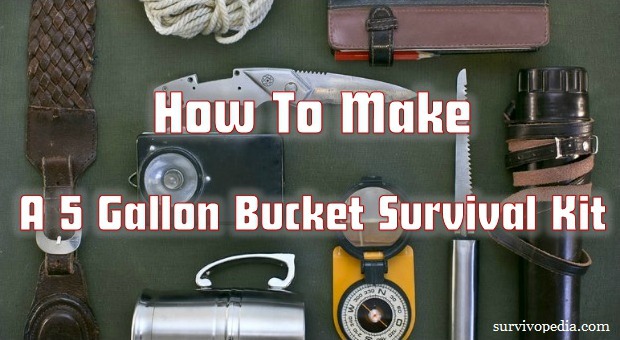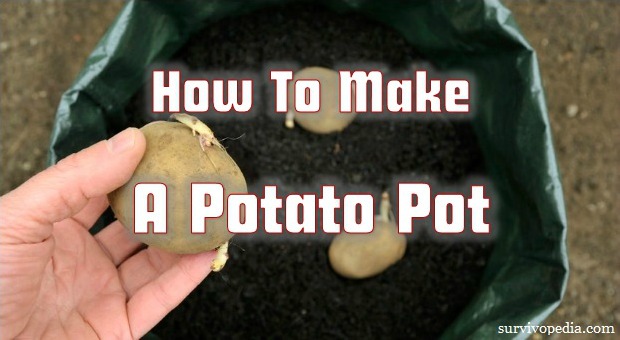Written by R. Ann Parris on The Prepper Journal.
When we embark on the road of preparedness, whether we aim small or plan to survive a nuclear holocaust, there are a million and five things to learn, build, do, and buy. It can be overwhelming at every stage. In fact, it can almost be more overwhelming at some of the intermediate stages than early on. You have great piles of stuff, but then you start thinking longer-term, sustainability, self-sufficiency, and the needs/wants just balloon all over. In some cases, the financial aspect alone is such a burden that people fall out and let go of the preparedness bug.
One thing that can help is to simplify the shopping list. In some case it’s about paring it down. In other cases, it’s about finding multi-purpose items.
The major benefit of the latter is that it can simplify things for beginners and old hands alike. When we pick something that can do multiple jobs right now, it gives us the ability to later expand to more specialized items as we’re ready. I’ll mostly focus on those items. I’ll also touch on some items I commonly see stocked deep that can get reduced or eliminated.
Pine Cleaner & Dish Detergent
Pine Sol is proof of a higher being or Mother Nature that loves us. Pine cleaner can be just about all things. It’s a disinfectant, and it doesn’t create color changes in fabric or wood. As such, pine cleaner can be used for:
- Floors (tile, linoleum, hardwood, carpet)
- Laundry (electric HE washers to hand-scrubbing)
- Toilets & bathrooms
- Kitchen and butcher area surfaces
- Vehicles
- Dusting surfaces with rags
- Bedding
Happily, it also comes in a whole variety of scents for those of us who don’t actually like lemon or pine scented cleaners.
Pine cleaner also has a major case for being the be-all number-one cleaning product because it can be had in super condensed forms that you dilute as much as 10:1 and 25:1 by purpose.

Dish detergent is another one that can do a lot of jobs. As a pet owner and cook, little breaks the grease around the stove hood or sickness stains in carpets the way dish detergent will – and usually, especially with hot water and a decent scrubby sponge or brush, with the least amount of elbow grease of anything else I’ve purchased.
This is the stuff we count on to kill the raw chicken germs on our cutting boards and knives, and to prep jars for another year of canning – it’s fine as a surface cleaner for nurseries, kitchens, and sick rooms.
Dawn gets counted on to work pants from whatever my father and I picked up through the day. The incredible oil breaking compounds also save critters after oil spills. While it will upset the microbe communities, Dawn is safe to use for potted plants and garden beds, which lets us reuse the water we’ve pulled for cleaning and laundry.
Bleach
Bleach has its place in the cleaning world and in preparedness, but usually in limited quantity. Plain, unscented bleach gets used 5-8 drops per gallon to help clean water for drinking – a single bottle will do hundreds or thousands of gallons of water.
However, that bleach has a shelf life, and the more unstable the temperatures, the faster it breaks down and loses its abilities.
Bonus fact: When you use bleach in hot water, you’re nullifying its purification abilities. It’ll brighten whites, but it’s the hot water killing germs in those cases.
Since you can wash anything in Pine Sol that you could in bleach, and get it sanitized to the same degree, consider keeping a little around for water supplies and cool-water post-wash dips for food service or sick room supplies, but you don’t really need a gallon a week or even a gallon a month.
Vinegar & Windex

Instead of stocking up on both window cleaners and vinegar, consider just going with vinegar. And if you’re not yet, give your windows and bathroom bright-work a scrub-down using sheets of newspaper or phone book pages instead of paper towels next time around.
Vinegar can be used full strength if needed, or diluted and combined in various ways for doing windows and mirrors. It can also be used to unclog shower heads, remove water spots, kill ants, deodorize drains (or, change the smell coming from them, anyway), and act as a fabric softener in laundry water.
And, of course, there’s the fact that we can use white vinegar for canning and cooking, something we’d never do with a window cleaner.
Windshield Glass Cleaner
If you do want to have and stockpile a separate, specific window cleaner, consider getting the tabs and concentrate packets that fuel stations use for restocking their squeegee buckets such as Kwik Blue, 303, or Bug Blitzer . They dissolve in even cool water, then can be transferred to a spray bottle for cleaning. They can cost pennies per gallon while storing very compactly.
Baking Soda & Epsom Salts

Baking soda had its own article as a prepper must-have item. Both were also mentioned in some of the barter articles. Between them, they do a lot of jobs in and on the body, in and around the home, out in the yard and garden, and on the road.
I could hardly write an article about do-it-all shopping and not include them, but they truly deserve 6-12 articles all their own.
Standard & Common Ammo/Firearms

As much as possible, I try to standardize at least ammunition if not actual firearms. I also try to pick up long-production-run and common firearms. Doing so means increased aftermarket parts and accessories at (more) affordable rates.
That allows us to use a step-up program.
I can buy a basic firearm, then a different/extra barrel or stock. I can upgrade as I’m able, using the reviews that abound for the more-common firearms, accessories and gear.
Being a freak, I also tend to take both magazine cost into account, as well as the variety of pouches and holsters with and without a rail/light system and-or the sling systems available for the firearms.

And then sometimes I pick a firearm because it has a wide range of magazines it will accept, as opposed to one that only takes its specific model, or the H&K AR model that is ever so slightly different and is thus restricted to H&K mags made just for it.
The same applies to ammo.
Rimfires like the 10/22 that aren’t picky about what type of ammo they get fed are also more likely to come home with me.
By sticking with common calibers, I can readily find an affordable round that shoots just like my preferred self- and home-defense ammo for practice. In some cases, it means I have a wider array of hunting, defense, and special-purpose rounds and-or bullets ready and waiting for me on the shelf.
Having commonly-used calibers also means that there’s a better chance even if somebody can’t use my magazine or stripper clip, they can reload theirs from mine if need be.
Bedding & Clothes
Cheat on your bed linens. If there’s a queen and a full bed, just buy queen sheets for both. You might have to tuck the sheets in further and tighter and more often for the full, but they mix and match. That means when a set or two rip, it’s no big deal. I have used king blankets and comforters on queens and full beds half my life. It works.
Fun fact about that king comforter: It folds up to fit either a full or a twin bed as a mattress pad just fine, and you can tuck it under queen bedding if needed as well most of the time.
That means that as age starts wearing mattresses, we can extend their lives. It also means that should somebody be sick or potty training, we can throw some garbage bags between the mattress and the comforter, and the bags won’t shift as much (and annoy the sleeper). Should somebody sneeze or giggle and dribble a little, we’re washing and drying a big blanket and sheets, not trying to clean, then cover a mattress, and inviting mold and mildew right into bed with us while it dries much slower.

Clothing can also be simplified with some regularity.
Shoes are pretty specific and socks need to fit a well, although with kids we can skip sizes and plan for 2-3 pairs of socks. Most other clothing has some leeway. If we make sure there are drawstrings and belt loops, we can tighten, add suspenders, pin up, and roll clothing.
Also, a hair elastic makes a hand sleeve garter for washing hands and dishes, or any other time rolled-up sleeves might try to un-roll or slide down.
As somebody who now gets her nephews’ hand-me-downs instead of us passing things to them, I can tell you that some oversized clothing is hazardous because it will catch and snag, but a M-L and a L-XL soul can share a lot of outerwear if it’s purchased in the larger size.
Storage Containers
As we start seriously accumulating things, we need somewhere to put it.
Tip #1: Avoid the “I’ll sort it later” trap of a junk drawer, junk shelf, “Misc.” box, and a catchall laundry basket.
If you truly go through weekly and put things in their place, that’s cool. Most of us toss, say we’ll get it later, don’t, toss, repeat, toss, repeat, and a 5-15 minute job of sorting turns into an hour+ that we then really start dodging.
There are lots of options for holding our goodies, any of which let us sort things as they come home.

Laundry baskets of varying sizes are cheap, and pretty durable. Lined with a sheet, towel or garbage bag, the holes don’t matter. If at some point we need to, they allow us to re-line or remove the liner and plant in them. They can be doubled up into fish traps or holders, large baskets can be turned into cribs (lined! lined well!) or puppy crates, we can use them harvesting larger produce, and then we can sponge them with pine cleaner and turn them into something else all over again.
Accounting or banker’s file boxes with the separate lids aren’t as durable as storage totes, but most of mine actually keep their lids better than the storage totes. They readily fit on shelves and they’re a size that’s reasonable to carry whether they’re packed with papers, books, or (oops) canned goods. They stack well and uniformly across manufacturers.
It’s easy to pop up a lid instead of re-taping or doing the four-corners tucks, which will also help us keep our storage supplies fairly neat.
The downside to them, of course, is that they’re not water- or bug proof. We can line them with trash bags, and-or wet-pack our supplies in gallon and two-gallon Ziploc, but it still leaves the potential that at some point, the cardboard will dissolve into sodden mess. Still, apples to apples with standard cardboard boxes, they hold their own.
They’re less expensive than most moving boxes, but if there’s a liquor store, go with the free boxes there instead – those will be nice and sturdy, too.
Then there are the things like kitty litter buckets we might get for free or buy instead of a smaller container of litter.

While not appropriate for everything, they, too, hold a ton of weight, and multi-function when needed. Today they might be canned goods, medical stuff, or actual litter for winter weight and traction. Tomorrow they might be a water catchment system, a stacked vertical tower for the garden, or sub-irrigated gardening containers. Given another year, they might start holding bulk seeds or garden tool heads.
Like the file boxes, square buckets have an advantage in being a nice, standard size (which simplifies shelving) and not wasting as much space as a rounded and deeply V-ed storage tote or bucket would.
Defunct coolers are another that can make for nice storage containers. The downside to those is the space lost to insulating, but wheels, sturdy handles, and a flip-top lid can definitely be handy sometimes.
Simplified Shopping Lists
Hopefully these few examples were enough to start the brain churning for experienced preppers and beginners alike. From things like pasta that we can use to make a dozen different distinct dishes to having two firearm calibers, from what we stock for cleaning to the lawn-and-garden supplies, there are a million ways we can simplify our shopping and thus simplify our lives. Working off lists of multi-use items can be an affordable way to get started, or to fill in gaps we’ve started noticing after a trial run.
In some cases, we can buy one thing and cross eight others off our lists as a result. Other times, we might choose to hold off on some of the diversity we want to add.
By simplifying lists, we can also eliminate a little of the pressure on our storage spaces, and we may be able to identify and rectify gaps in our supplies when we sit down to compare what we have to what we use normally. It might also let us make a switch in our daily life that will save money in the long run, opening up the budget for extra seeds, Sevin dust, shoes, sugar and storage racks.
The post Practical Preparedness – Simplify Your Shopping List appeared first on The Prepper Journal.
from The Prepper Journal
Don't forget to visit the store and pick up some gear at The COR Outfitters. How prepared are you for emergencies?
#SurvivalFirestarter #SurvivalBugOutBackpack #PrepperSurvivalPack #SHTFGear #SHTFBag

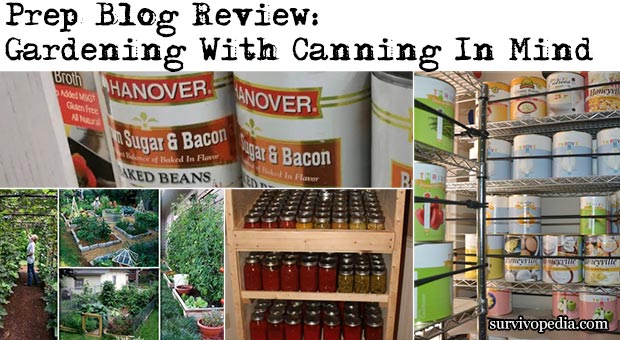
 “Spring is fast approaching, so are you planning to grow a healthy and beautiful vegetable garden that will help beautify your home’s outdoor and be a place of relaxation?
“Spring is fast approaching, so are you planning to grow a healthy and beautiful vegetable garden that will help beautify your home’s outdoor and be a place of relaxation?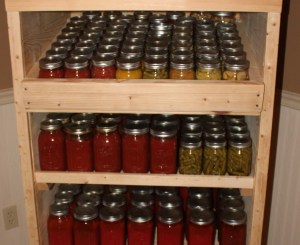
 “Several weeks ago we established that canned goods are safe to eat far past their expiration date thus a great choice for food storage programs.
“Several weeks ago we established that canned goods are safe to eat far past their expiration date thus a great choice for food storage programs.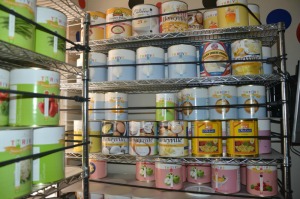







 About the author: Joseph Gleason is the founder of
About the author: Joseph Gleason is the founder of 

